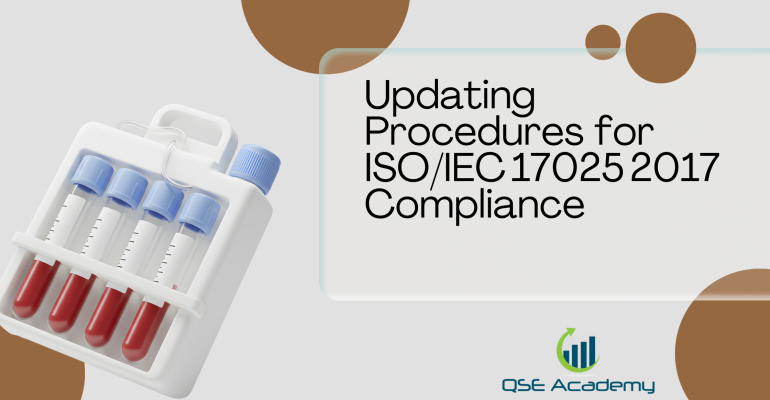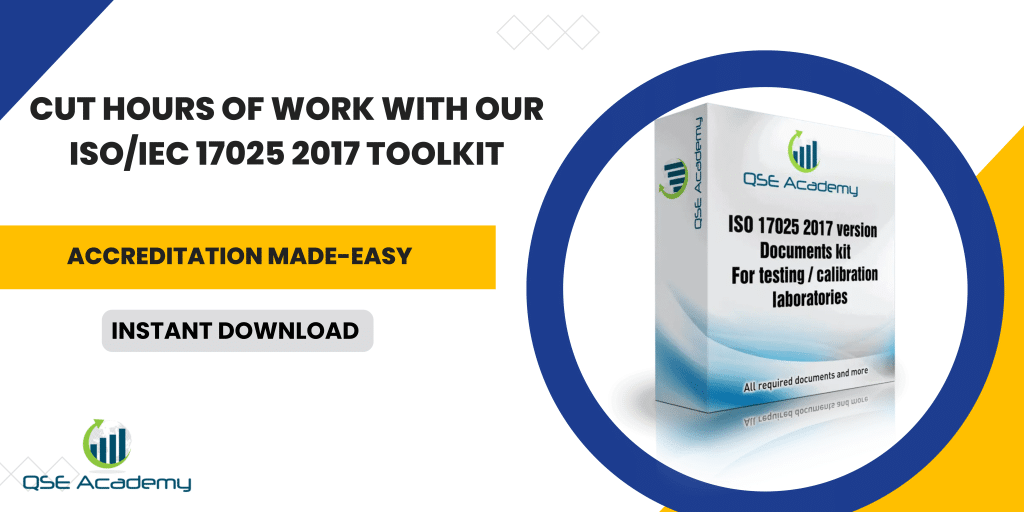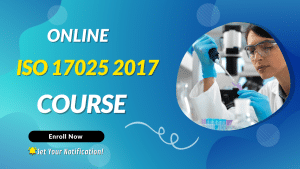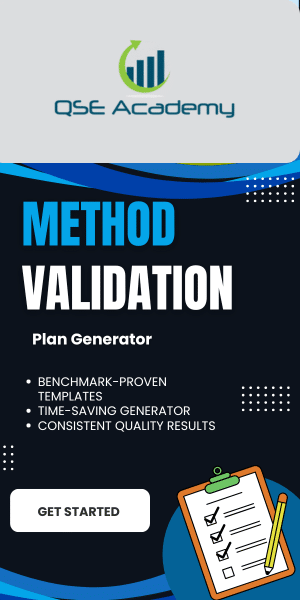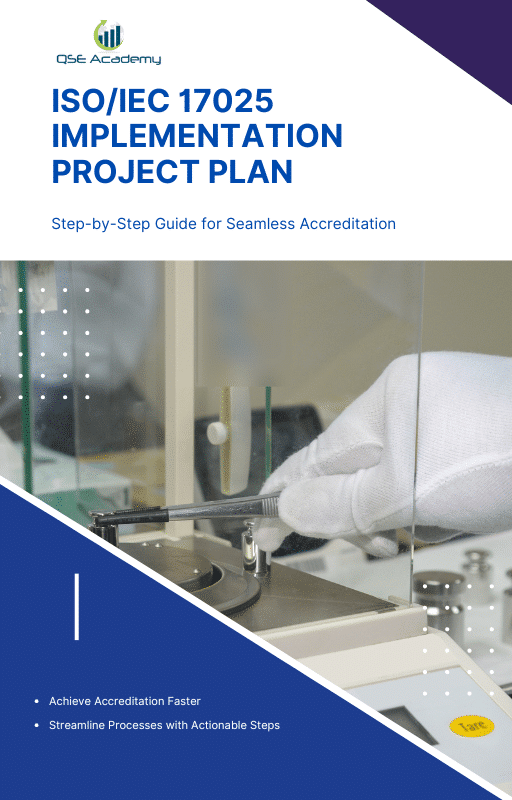Updating Procedures for ISO/IEC 17025 2017 Compliance
Last Updated on October 13, 2025 by Melissa Lazaro
Why Updating Procedures Is the Heart of ISO/IEC 17025:2017 Compliance
Every time a new version of ISO/IEC 17025 comes out, the first question I hear from labs is, “Do we have to rewrite everything?”
The short answer? No—but you do have to rethink how your procedures actually work.
When ISO released the 2017 version, it wasn’t about creating more paperwork. It was about making your documentation make sense. The old version leaned heavily on strict procedures and fixed templates. The new one gives you room to design a system that fits the way your lab really operates—so long as it’s controlled, consistent, and effective.
In my experience, labs that took the time to properly update their procedures didn’t just pass audits more easily—they made their systems simpler to manage. Things like reporting errors, unclear responsibilities, or duplicate processes disappeared almost overnight.
Updating procedures isn’t just a compliance task—it’s a tune-up for your entire management system. Done right, it can reduce audit stress, improve traceability, and boost team accountability.
Bottom line: your procedures should do more than satisfy a clause. They should help your people do their jobs better—and that’s exactly what ISO 17025:2017 expects from you.
Understanding What Changed in ISO/IEC 17025:2017 and Why It Matters for Procedures
When labs first open the 2017 version of ISO/IEC 17025, it’s easy to feel like everything’s been rewritten. But underneath the new layout, the message is simple: ISO wants your system to be smarter, not heavier.
The old 2005 version leaned on detailed instructions—do this, then that, document it exactly this way. The 2017 version steps back and says, “Prove that what you’re doing works.” That subtle shift completely changes how your procedures should look.
Here’s what that means in practice:
-
More flexibility, less prescription. You don’t have to document every single step—just enough to control your process and demonstrate competence.
-
Risk-based thinking replaces rigid rules. Every procedure should now reflect awareness of what could go wrong and how you prevent it.
-
Focus on outcomes, not format. Assessors care about whether your process achieves consistent, valid results—not how pretty your SOP looks.
-
Impartiality and confidentiality take center stage. You’ll need procedures that show you’ve identified and managed risks to both.
In my experience, the labs that struggle most during this update are the ones that cling too tightly to old habits—rewriting procedures word-for-word instead of asking whether each one still adds value.
Pro Tip: Before editing anything, ask yourself, “Does this procedure help us achieve accurate, impartial, and reliable results?” If the answer’s yes, keep it and adjust. If not, simplify or merge it.
Step-by-Step Guide to Updating Laboratory Procedures for ISO/IEC 17025:2017
Updating your lab’s procedures for ISO/IEC 17025:2017 doesn’t have to mean starting over. In fact, the smartest labs I’ve worked with didn’t rewrite everything—they refined what already worked and aligned it with the new intent.
Here’s a simple, practical roadmap that keeps your updates focused and efficient:
Step 1: Identify What’s Outdated.
Pull out your current procedures and compare them against the 2017 clauses. Look for areas the new version changed significantly—like impartiality, risk management, or decision rules. These are your top priorities.
Step 2: Streamline and Consolidate.
ISO 17025:2017 allows flexibility. You don’t need three separate documents if one clear procedure can do the job. Combine overlapping documents, remove redundancy, and focus on clarity.
Step 3: Align with a Process-Based Approach.
Instead of writing procedures around clauses, write them around how your lab actually operates. Describe the process from start to finish—what happens, who’s responsible, and how results are verified. That’s what assessors want to see: how your system works in real life.
Step 4: Integrate Risk Management.
Add simple risk awareness steps into your procedures. For example, in your sampling or calibration processes, include a line that prompts staff to note any risk that could affect validity. It’s a small tweak that shows compliance with the new mindset.
Step 5: Review Roles and Responsibilities.
Make sure every procedure clearly defines ownership. Under 2017, accountability is huge—if something goes wrong, assessors will ask who ensures it doesn’t happen again.
Step 6: Validate Before Approval.
Before finalizing an updated procedure, test it in real lab work. Ask your technicians if it’s practical. If it feels too long, too vague, or confusing, revise again.
Pro Tip: Don’t chase perfection—chase usability. A procedure that’s 90% compliant and 100% understandable will always perform better than one that’s flawless on paper but ignored in practice.
Key Procedures Affected by ISO/IEC 17025:2017 Requirements
Not every document in your system needs a total rewrite—but some definitely do. The 2017 version introduced new expectations in certain areas, and assessors are quick to zoom in on them. From what I’ve seen across multiple labs, these are the procedures that usually need the most attention:
1. Impartiality and Confidentiality
These two are no longer side notes—they’re foundational. You’ll need a procedure that goes beyond simply stating “we are impartial.” It should show how you identify, assess, and control risks to impartiality and confidentiality.
For example, document how you handle potential conflicts of interest, and what preventive actions you take.
2. Competence and Training
Your training records can’t just list who attended a session—they must prove competence. Update your training and qualification procedure to include ongoing performance evaluations, not just initial approvals. Think of it as tracking capability, not just attendance.
3. Equipment Calibration and Maintenance
The 2017 version emphasizes measurement traceability and decision rules. Your procedure should explain how calibration is verified, how reference standards are maintained, and how measurement uncertainty is considered in results.
4. Document Control
Flexibility is a key word now. You’re no longer required to follow a rigid format, but you do need to ensure version control, accessibility, and authorization are consistent. Simplify where possible, but don’t lose track of control.
5. Complaints and Nonconformity Handling
Your complaint-handling process should now demonstrate impartiality and traceability. When it comes to nonconformities, link your corrective actions to risk management—assessors want to see that issues are analyzed, not just “fixed.”
6. Internal Audit and Management Review
These procedures should reflect the new process-based, risk-aware mindset. Internal audits must evaluate effectiveness, not just presence, while management reviews should include discussions on impartiality, risks, and opportunities.
In every lab I’ve helped, updating just these six procedures brought them 80% of the way toward ISO/IEC 17025:2017 compliance.
Focus on what’s high-impact first—then fine-tune the rest.
Pro Tip: Start a “Procedure Update Tracker.” Record what’s been revised, what’s pending, and what needs validation. It keeps your transition organized and shows auditors you’re managing change proactively.
Writing and Formatting Procedures the 2017 Way
One of the biggest mistakes I see during ISO/IEC 17025 updates is overcomplicating documentation. Some labs take “update your procedures” as a signal to make them longer, more formal, and full of jargon. But ISO 17025:2017 actually wants the opposite—procedures that are clear, relevant, and practical.
Here’s how to approach writing the 2017 way:
Keep It Process-Focused, Not Clause-Focused.
Your procedure shouldn’t read like a checklist of ISO clauses. It should describe how your lab actually works. Write in the order people perform tasks—step by step, from start to finish. This makes procedures more natural to follow and easier to audit.
Explain the “Why,” Not Just the “How.”
The new version is big on purpose and intent. For every major step, briefly explain why it matters. For example:
“This step ensures that results are traceable to national standards.”
Simple context like that connects the dots between compliance and real-world lab practices.
Use Clear, Active Language.
Avoid passive phrasing and unnecessary formality. Instead of writing, “The equipment shall be calibrated,” write, “The technician calibrates the equipment before each use.” It’s cleaner, faster to read, and easier to audit.
Add Visuals or Flowcharts Where Possible.
Many labs are now using process maps instead of long text procedures. A simple flowchart can replace an entire page of instructions—and assessors love it because it’s easier to trace process flow.
Keep the Length Proportional to the Process.
Not every activity needs a three-page SOP. If something takes 30 seconds to do, it shouldn’t take 10 minutes to read. Aim for brevity and clarity, not volume.
Pro Tip:
Before approving a procedure, hand it to a new technician and ask them to follow it without help. If they can perform the task confidently, your procedure is well written. If they struggle or ask questions, refine it again. That’s the best real-world validation you’ll ever get.
Reviewing, Approving, and Implementing New Procedures
Once your procedures are written, the real test begins—getting them approved and actually used.
I’ve seen beautifully updated procedures fail simply because no one knew they existed or understood how to apply them. The 2017 version expects not just controlled documents, but controlled implementation.
Here’s how to make that happen smoothly:
1. Review Collaboratively.
Don’t keep the review process behind closed doors. Involve both your quality and technical teams before final approval. Quality ensures compliance; technical staff ensure practicality. When both agree, you know the procedure will hold up in real work.
2. Validate Before Release.
Never assume a procedure works just because it reads well. Test it in a live setting. Have someone perform the task exactly as written—if it’s confusing or unrealistic, adjust it before approval. This saves countless headaches later.
3. Approve Through the Right Authority.
Every document should have a clear owner and approver. Typically, technical procedures are approved by the Technical Manager, while system-level ones go through the Quality Manager. ISO 17025:2017 values accountability—show who’s responsible for accuracy and oversight.
4. Communicate Changes Clearly.
Don’t just upload the new version and call it done. Tell your team what changed and why. Short summary sheets or side-by-side comparisons work great for this. When people understand the reason behind updates, compliance becomes natural.
5. Train, Don’t Just Inform.
A quick meeting or memo isn’t enough. Walk your staff through the new procedures. Use examples, show the differences, and explain what assessors will look for. This bridges the gap between documentation and day-to-day practice.
6. Control Distribution.
Make sure only the latest versions are accessible. Whether you use digital document control or physical binders, remove outdated copies immediately. During an audit, nothing undermines credibility faster than finding multiple conflicting versions in use.
Pro Tip: Keep a simple “Procedure Change Log” that records every revision, date, reason for update, and who approved it. Assessors love this—it shows transparency, traceability, and solid control over your documentation system.
Verifying Effectiveness Through Internal Audits and Feedback
Updating procedures is one thing—making sure they work is another. Too often, labs stop at “approved and distributed,” without checking if the new procedures are actually being followed or delivering results. ISO/IEC 17025:2017 takes a different stance: effectiveness is the real measure of compliance.
Here’s how to make sure your updates are doing what they’re meant to do:
1. Audit for Performance, Not Paperwork.
When you audit after updating procedures, don’t just verify that the documents exist—verify that people are using them correctly. Watch how processes are done, ask questions, and check if outcomes match what’s written. A great question to ask is:
“Can you show me how this procedure helps ensure accurate results?”
If your team can explain it confidently, your procedure is working.
2. Use Early Internal Audits as a Test Run.
Schedule an audit soon after rolling out updated procedures. Treat it like a “reality check” rather than an inspection. This helps identify confusing instructions or missing steps before your transition audit.
3. Gather Feedback from the Frontline.
Your lab technicians and analysts are the best source of insight. Ask them what’s working, what’s unclear, and where procedures might be overcomplicated. Sometimes a small tweak—like changing the order of steps—makes a huge difference.
4. Track Findings and Improvements.
If an internal audit reveals issues, document them just like any other nonconformity: root cause, corrective action, and follow-up. This closes the loop and shows assessors that you’re not only compliant but also continuously improving.
5. Measure Effectiveness Over Time.
Review indicators such as error rates, customer complaints, or turnaround times before and after updates. If those metrics improve, that’s evidence your new procedures are delivering real value—not just compliance.
Pro Tip: During your next management review, present the results of your “post-update audit.” It’s one of the easiest ways to demonstrate to assessors that your lab doesn’t just write procedures—it verifies that they’re effective.
FAQs – Updating ISO/IEC 17025 Procedures
Whenever I help labs update their documentation for ISO/IEC 17025:2017, a few questions always come up. Here are the ones I hear most often—answered simply and honestly.
Q1: Do we still need a Quality Manual under ISO/IEC 17025:2017?
Technically, no—the 2017 version doesn’t require a Quality Manual. But in practice, many labs keep one because it helps organize the system. If you decide to keep it, simplify it. Treat it as a summary that links your procedures, not a repetition of them.
Q2: Can we keep our old SOPs if they still work?
Absolutely—if they’re still relevant, accurate, and effective. You don’t need to reinvent the wheel. Just make sure they reflect the 2017 principles: risk-based thinking, competence, impartiality, and flexibility. Sometimes, a small edit to clarify responsibilities or add a risk-control step is all it takes.
Q3: How do we show assessors that we’ve updated our procedures?
Keep a clear paper trail. Have a version-controlled “Procedure Update Log” that shows:
-
which procedures were revised,
-
what changes were made, and
-
why those changes were necessary.
Assessors love seeing transparency—it tells them you understand both the letter and the intent of the standard.
Q4: What if our staff are slow to adapt to new procedures?
That’s normal. Change takes time, especially in labs with long-standing habits. The key is communication. Explain the “why” behind the updates, not just the “what.” When your team understands the reasoning, adoption follows naturally.
Pro Tip: Don’t rush updates right before your assessment. Give your team at least a few weeks to get comfortable with the new procedures, and schedule a brief refresher audit or training session. It’ll save you a lot of stress during the real audit.
Building a Leaner, Smarter ISO/IEC 17025 System
Updating your procedures for ISO/IEC 17025:2017 isn’t about creating more documents—it’s about creating better ones. The labs that thrive under the new version aren’t those with the thickest binders or fanciest software; they’re the ones whose procedures actually make sense to the people using them.
When your system is lean, clear, and aligned with how your lab truly operates, compliance stops feeling like a burden. It becomes part of your daily rhythm—simple, consistent, and reliable.
Here’s what to keep in mind as you move forward:
-
Keep your updates purpose-driven. Every procedure should help your lab achieve accurate, impartial, and consistent results.
-
Focus on usability over perfection. If your team can follow a procedure easily, you’ve already met one of ISO 17025’s biggest goals—effectiveness.
-
Treat updates as an ongoing process. As your lab evolves, your procedures should too.
In my experience, labs that take the time to refine their system now end up saving hours of audit stress later. They walk into assessments confident, not cautious—because they know their documentation reflects real practice.
And if you want to make the process faster, that’s where expert support helps. At QSE Academy, we offer:
-
Complete ISO/IEC 17025:2017 Documentation Packages (ready to customize),
-
Tailored procedure-writing services, and
-
Consultation sessions to help your lab update, implement, and verify changes smoothly.
Your next step: download our ISO/IEC 17025 Procedure Update Checklist or book a short consultation with one of our specialists. A focused conversation today can save you months of uncertainty later—and get your lab fully aligned with 2017 requirements with confidence.
I hold a Master’s degree in Quality Management, and I’ve built my career specializing in the ISO/IEC 17000 series standards, including ISO/IEC 17025, ISO 15189, ISO/IEC 17020, and ISO/IEC 17065. My background includes hands-on experience in accreditation preparation, documentation development, and internal auditing for laboratories and certification bodies. I’ve worked closely with teams in testing, calibration, inspection, and medical laboratories, helping them achieve and maintain compliance with international accreditation requirements. I’ve also received professional training in internal audits for ISO/IEC 17025 and ISO 15189, with practical involvement in managing nonconformities, improving quality systems, and aligning operations with standard requirements. At QSE Academy, I contribute technical content that turns complex accreditation standards into practical, step-by-step guidance for labs and assessors around the world. I’m passionate about supporting quality-driven organizations and making the path to accreditation clear, structured, and achievable.

